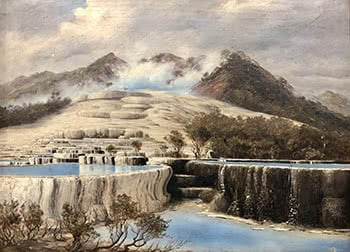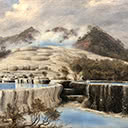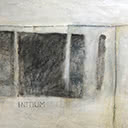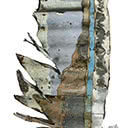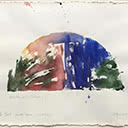White Terraces
42 x 57 cm
est. $40,000 - 60,000
The original oak frame was made by Charles Blomfield's brother Includes the original 32 x 66 cm gold leaf sign made by Charles Blomfield that hung in the window of his Victoria Arcade, Auckland studio and signed first edition copy of Charles Blomfield His Life and Times, Muriel Williams, Hodder and Stoughton, 1979
PROVENANCE
Collection of the late Muriel Williams
Collection of artist's daughter Bessie
Blomfield, a 21st Birthday gift from
her father, Charles Blomfield.
The painting has remained in the Blomfield
family collection since 1896 and now comes
to market for the first time in 126 years
ILLUSTRATED
p. 72 Charles Blomfield His Life and Times,
Muriel Williams, Hodder and Stoughton,
1979.
The rarest and most unusual view of the White Terrace, this perspective was painted by Charles Blomfield while standing in the hot water pools at the bottom of the White Terrace, during his 6-week camping excursion at the sites of the Pink and White Terraces, Lake Rotomahana Rotorua, in the January and February summer of 1885, along with his eldest daughter, 8-year-old Mary, just prior to the Tarawera Eruption on 10th June 1886. This is a direct scale painting of his 1885 original, and was completed in his studio in Victoria Arcade, Auckland. This particular painting was chosen by his daughter Bessie Blomfield for her 21st birthday in 1901, subsequently passed down to Bessie's daughter Muriel and took pride of place in the Muriel Williams personal collection. Charles Blomfield has long been recognised as the pre-eminent early New Zealand painter of the Pink and White Terraces and the surrounding region of Rotorua and Lake Tarawera. Blomfield's meticulous sketches and paintings are some of the most important historical records we have of the region. The White Terraces were at the north end of Lake Rotomahana and faced away from the lake at the entrance to the Kaiwaka Stream. They descended to the lake edge forty metres below. The additional sunlight received from facing north created their bleached white appearance. The White Terrace were the larger of the two formations, covering in excess of three hectares. They were reportedly the largest silica sinter deposits on earth.

